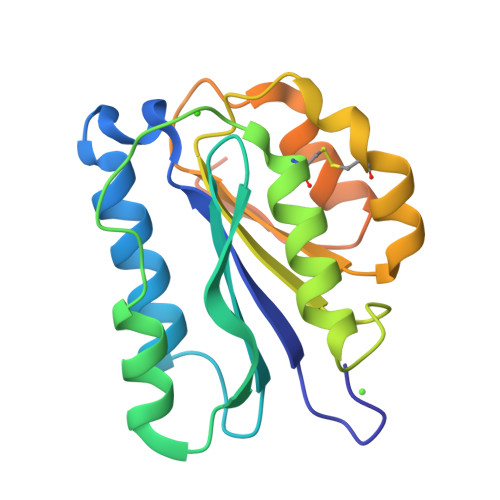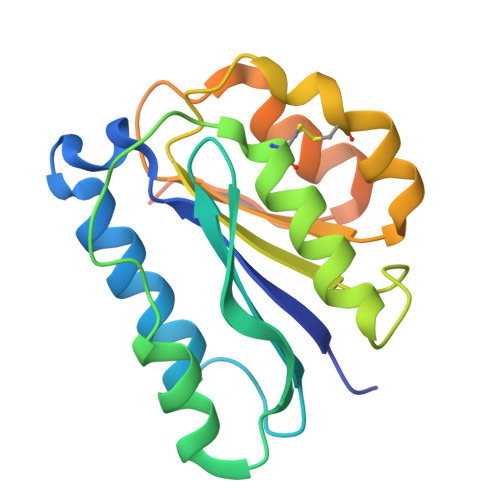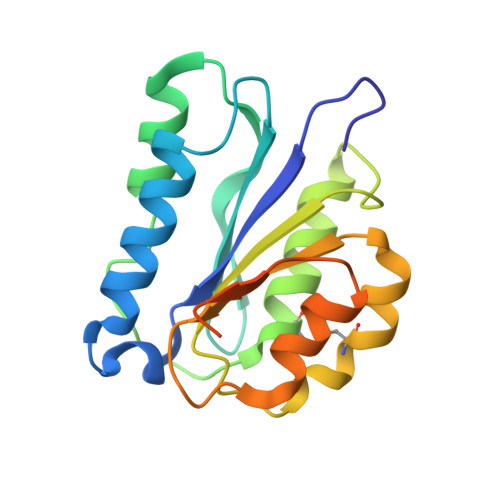Structural and Biophysical Analysis of the CLCA1 VWA Domain Suggests Mode of TMEM16A Engagement.
Berry, K.N., Brett, T.J.(2020) Cell Rep 30: 1141-1151.e3
- PubMed: 31995732
- DOI: https://doi.org/10.1016/j.celrep.2019.12.059
- Primary Citation of Related Structures:
6PYO, 6PYX - PubMed Abstract:
The secreted protein calcium-activated chloride channel regulator 1 (CLCA1) utilizes a von Willebrand factor type A (VWA) domain to bind to and potentiate the calcium-activated chloride channel TMEM16A. To gain insight into this unique potentiation mechanism, we determined the 2.0-Å crystal structure of human CLCA1 VWA bound to Ca 2+ . The structure reveals the metal-ion-dependent adhesion site (MIDAS) in a high-affinity "open" conformation, engaging in crystal contacts that likely mimic how CLCA1 engages TMEM16A. The CLCA1 VWA contains a disulfide bond between α3 and α4 in close proximity to the MIDAS that is invariant in the CLCA family and unique in VWA structures. Further biophysical studies indicate that CLCA1 VWA is preferably stabilized by Mg 2+ over Ca 2+ and that α6 atypically extends from the VWA core. Finally, an analysis of TMEM16A structures suggests residues likely to mediate interaction with CLCA1 VWA.
Organizational Affiliation:
Immunology Program and Medical Scientist Training Program, Washington University School of Medicine, St. Louis, MO 63110, USA; Department of Internal Medicine, Division of Pulmonary and Critical Care, Washington University School of Medicine, St. Louis, MO 63110, USA.




















